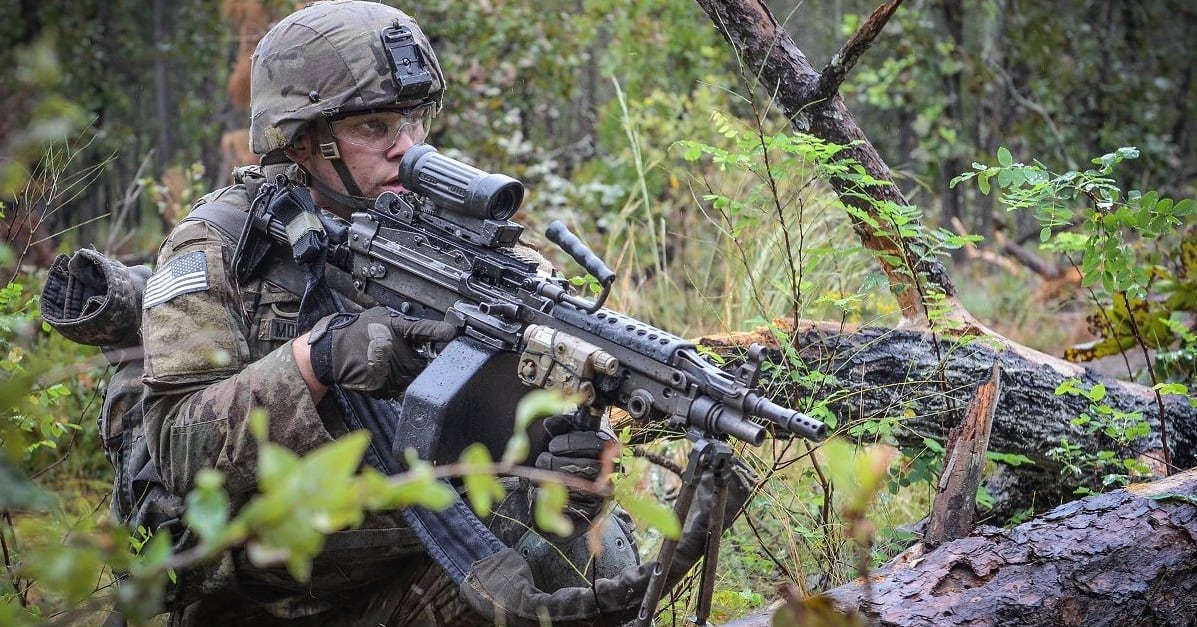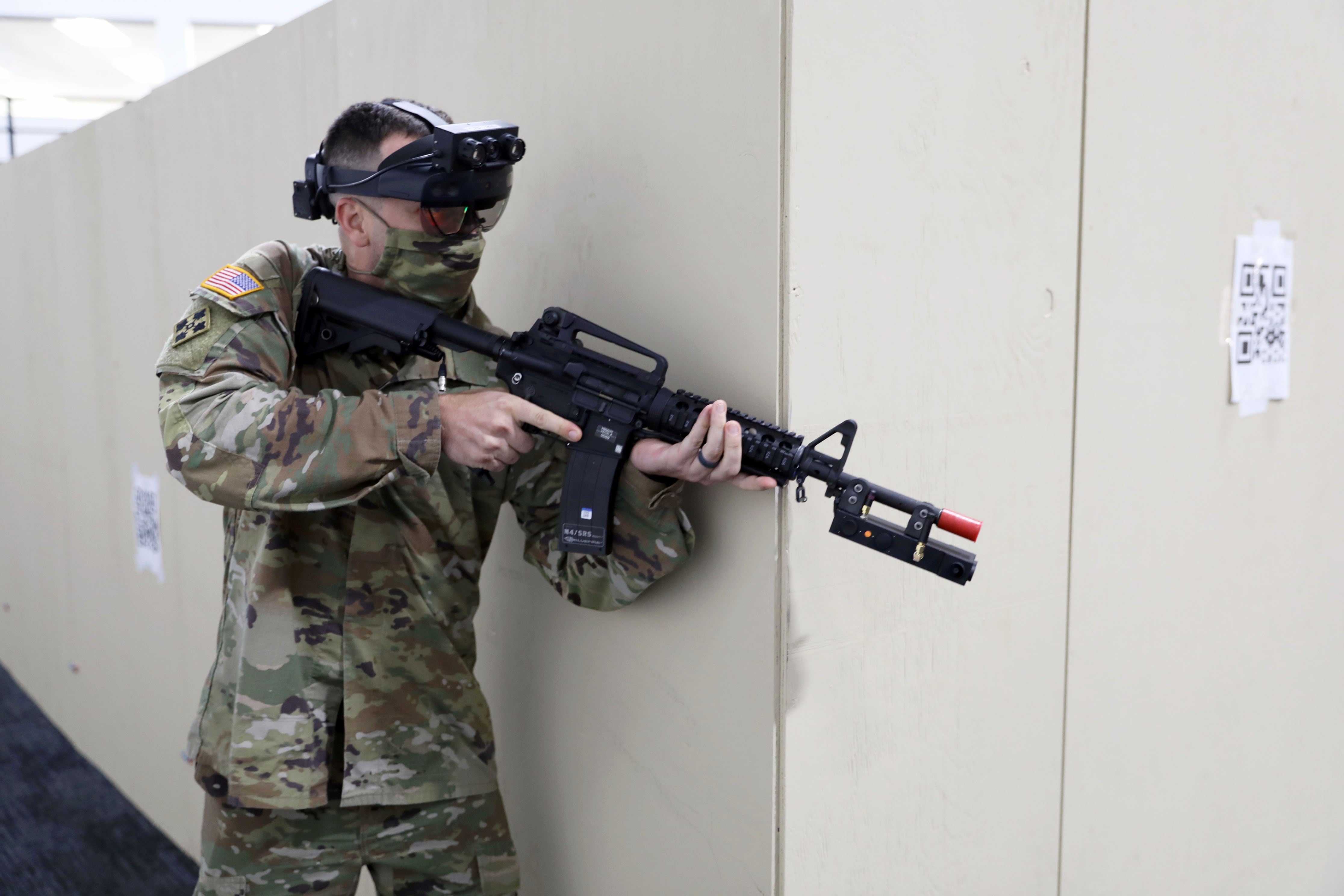FORT BELVOIR, Virginia — The Army is now running its Soldier Integration Facility, a kind of crossroads between the high-tech conceptual ways in which scientists go after warfighting problems and the different programs that actually build gear.
Much like a race car garage, where mechanics might pull down high-engineering ideas to continually tweak cars for test runs and races, those running the SIF want to see it testing ideas in the virtual world and then making physical versions of gear that can be handled.
Those items would then continue in development by the larger programs that get gear built in quantity.
RELATED

Army Times recently toured the facility and ran through a brief room-clearing exercise in an augmented reality scenario, using early prototype stand-ins for the Integrated Visual Augmentation System.
The IVAS, which is fast approaching its third major prototype version in about a year, is seen as a do-it-all goggle that will provide soldiers night vision, target acquisition, internal and external comms links, and navigation data.
The scenario, in the Squad Immersive Virtual Trainer, allowed an Army Times reporter to experience real-time feedback on shooting, use of other weapons such as hand grenades and an after-action instant replay in which squad members could see exactly who shot what, when and where.
The device, which is still under development, can scan an area, be it the woods outside the barracks, an official training site or a motor pool squad bay. That data is loaded into a laptop and in about 20 to 30 minutes, users can begin dragging and dropping everything from IEDs to enemy soldiers, civilians, barricades, even dogs for a realistic and evolving landscape.
And evolving is the right word.
Brig. Gen. Anthony Potts told Army Times that developers are working on algorithms that will help the enemy avatars adapt and improve their fighting ability, to the benefit of individual soldiers and squads using the system.
“If you think you can suddenly become an expert,” said Potts, the head of Program Executive Office Soldier. “The avatars will begin to react to how you are approaching this thing.”
The IVAS is just one example of a product that’s being built for soldiers and will be tested here.
Another goal for the Soldier Integration Facility is to achieve a company-sized communications network inside the building, even virtually, so that they can model how communications are being sent and received.
But more importantly, they can determine what impact each new data-driven device is having on the squad, platoon and company networks, said Col. Troy Denomy, program manager close combat squad.
Denomy noted that the facility will have a 3D printer, and design software and hardware to put items to the test and adjust on the fly.
The goal is to bring in those technologies that may help the soldier, he said, and “get a quick, will this thing work? And does it provide value?” before investing millions or billions in a new device.
The Soldier Integration Facility isn’t a program office, the more traditional, long-term entities that build, put out and improve upon gear that’s going to be part of the soldier kit for years.
It exists, Denomy said, to solve problems for the program offices.
They’ve partnered with the Combat Capabilities Development Command Soldier Center in Natick, Massachusetts, Night Vision Labs at Belvoir, Maneuver Battle Labs at Fort Benning, Georgia, and others to field requests for their problems and operate as a quick-hit place for evaluations that can save the others time or get them feedback.
One initiative that will pull together a lot of current efforts is squad lethality metrics, Potts said.
The effort, “Measuring and Advancing Soldier Tactical Readiness and Effectiveness,” begun in 2018 has continued under its new designator. And the S2PRINT effort has now become the Soldier/Squad Performance Research Institute.
That program and a new Soldier Squad Performance Institute at Natick will ultimately give commanders a kind of dashboard to monitor the biofeedback and performance of individual soldiers and units at or below the company level.
As Potts pointed out, taking those measures and seeing how a soldier or squad performs can help a commander better decide how to use the formations they have.
For instance, the best squad for clearing might be the first to call up, but not if the sensor shows they’ve got very little gas in the tank and are about to crash physically, he said.
And the race car analogy goes on.
“I’ve watched NASCAR, I’ve watched guys lose races,” Potts said.
A lead racer might look like he’s going to finish on top, but then doesn’t listen to his pit crew and get refueled or reset.
The Soldier Integration Facility also gives developers a way to connect with outside groups, such as industry, Potts said. He’s coined the term “problem sets,” which are ways to pull out pieces of requirements that the PEOs are trying to provide.
The SIF can become a place where those items can be sent to industry and good solutions can have their tires kicked to see if they’re race ready.
Todd South has written about crime, courts, government and the military for multiple publications since 2004 and was named a 2014 Pulitzer finalist for a co-written project on witness intimidation. Todd is a Marine veteran of the Iraq War.





